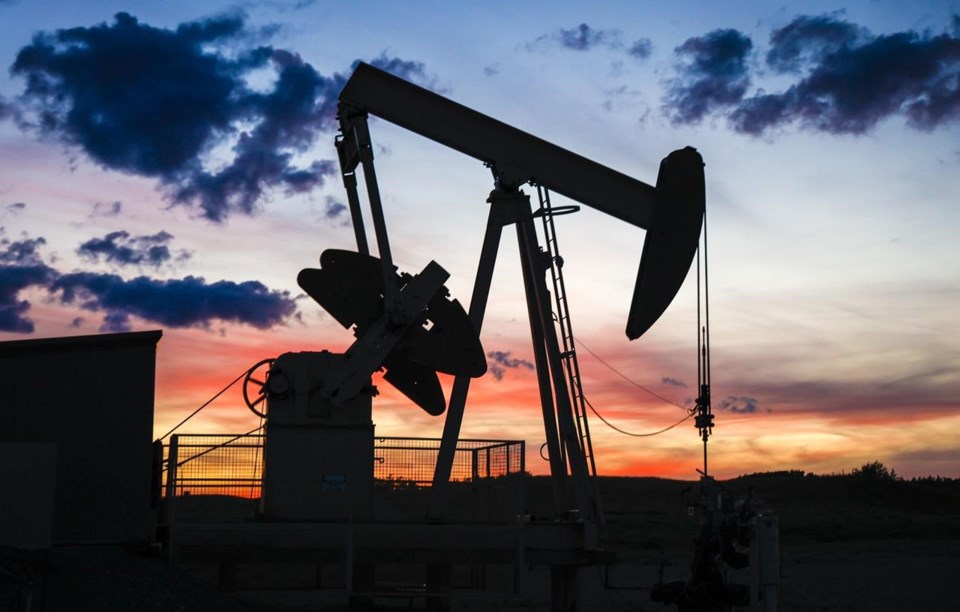CALGARY — Canada's oil and gas sector is pointing to new government numbers that it says proves the industry can increase production and lower emissions at the same time.
The analysis by industry group Canadian Association of Petroleum Producers (CAPP) of the most recently available federal production and emissions data shows emissions from the country's conventional oil and natural gas sector fell 24 percent in the last decade.
"When we talk about growing Canada’s role as a responsible provider of natural gas and oil to the world, emissions performance is one of those measures," said CAPP president and CEO Lisa Baiton in a news release.
"Canada’s conventional producers are demonstrating we can grow energy production to address energy security while also lowering emissions."
Conventional production refers to all oil and natural gas production outside of Canada’s oilsands.
During the period studied, the decade between 2012 and 2021, Canadian conventional oil production declined by nine per cent, but emissions from production dropped by 27 per cent — or from 100 million tonnes of carbon dioxide equivalent in 2012 to 76 million tonnes in 2021.
For natural gas, total C02 emissions fell by 22 per cent although production rose by 35 per cent. Natural gas producers were able to reduce their total emissions of methane — a particularly harmful greenhouse gas — by 38 per cent.
The new data comes as Canada's oil and gas sector — the country's biggest emitting sector, accounting for 28 per cent of Canada's overall emissions in 2021 — is under increasing pressure to clean up its operations in order to help the country comply with international emissions reduction pledges and fight climate change.Â
This fall, the federal government is expected to unveil its promised cap on emissions from the oil and gas sector — a cap that is broadly opposed by both the industry and the government of Canada's biggest oil-producing province, Alberta.
Julia Levin, associate director at the non-profit Environmental Defence, said the fact the industry opposes the cap illustrates it's not as confident in its long-term ability to slash emissions as it says it is.
"If you're saying you can have higher production and lower your emissions, then you should welcome the emissions cap," Levin said in an interview.Â
"They're telling us they can do it. Let's call their bluff and put in place a strong emissions cap."
Levin added a number of independent studies recently have cast doubt upon the way the oil and gas industry accounts for and reports its methane emissions to government.
One study published earlier this year in the journal Environmental Science and Technology used aircraft to measure actual airborne methane emissions from heavy oil facilities in Saskatchewan, and concluded they were releasing almost four times more of the gas than the companies reported to government.
Kevin Birn, vice-president and Canadian oil markets chief analyst with S&P Global, said it's true that there is some uncertainty right now about the best way to measure and account for methane emissions.Â
But he said that doesn't take away from the fact that emissions from the sector have been falling, which should be viewed as an achievement.
“If the ultimate goal is to reduce carbon intensity to improve the carbon competitiveness of Canadian exports, this would be positive," Birn said in an interview.Â
"And if the goal is also, within our domestic borders, to try to reduce our absolute emissions, I think this is positive too.”
The CAPP analysis does not include oilsands, which made up 65 per cent of overall Canadian oil production in early 2023, and which some studies have suggested generates 2.2 times as many emissions per barrel than the average crude extracted in North America.
But an S&P Global report released earlier this month showed absolute greenhouse gas emissions from Canadian oilsands production were flat in 2022 at 81 million tonnes of C02, even as total production topped 3.1 million barrels per day, a gain of more than 50,000 barrels per day year-over-year.
Birn said that marks the first year total emissions from the oilsands sector did not rise, excluding any major market disruption resulting in a decline in production.
While he said overall emissions from the sector will likely start to trend upwards again in the next couple of years due to increased production, the numbers appear to indicate that oilsands emissions could peak earlier than expected, and at a lower level than previously estimated.
This report by The Canadian Press was first published Aug. 31, 2023.
Amanda Stephenson, The Canadian Press




